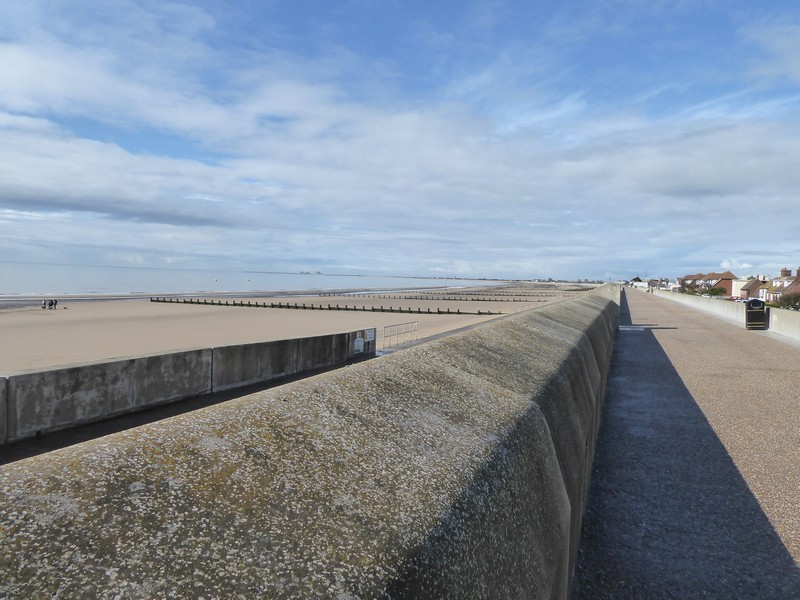With family commitments and an impending matter of a football game against Italy on the horizon I decided I could just about fit a single days walk in on the south coast. I reasoned that traveling there and back on a Saturday should see lighter traffic and so it turned out to be.
Today’s walk would essentially be around the large peninsula of land with Selsey Bill as its southern promontory. I looked at the free parking possibilities and decided at a half way point of walking into Chichester to catch a bus and where I would finish today’s walk. After parking close to Chichester College I walked the mile into Chichester and caught the 07:05 #51 bus to Selsey, it being a Saturday I could use my Bus Pass. I must admit I have not used it as much as I would like, as most of my bus journeys occur before 09:30, the watershed after which the Pass is accepted.
The weather forecast for the day did not look good and I accepted that I was going to get wet. It turned out that it rained lightly for virtually all of the walk and I kept my walking jacket on the whole time. However, the big plus was that it was warm. In fact, as I continued my walk along the sea front of Selsey, bathers were in the water while the rain fell. It was also very gloomy and overcast, so again along this part of the coast I had poor and restrictive views and visibility. As the tide was well out I managed walk around to Selsey Bill. From the west side of the peninsular I could just about make out other land forms in the mist that were seemingly the Isle of Wight and the body of the water before me the start of The Solent.
From my maps and reading other trip reports I knew I had to begin heading inland as like Pagham Harbour I needed to circumvent the large Nature Reserve of Medmerry. In the past it had been possible to walk along the coast, but an intentional breech had been made in the shingle shore allowing a deep fast-flowing stream called the Broad Rife to pass into the sea. The paths, tracks and roads are poorly presented on the OS maps, so I used the Google Maps satellite view to plot a way around the Reserve.



After an hours walk I emerged back on the shoreline at Bracklesham and continued on towards East Wittering. Atop the shingle beach there was no sea wall or compacted shingle to walk on, so I descended down onto the beach to pick up a good line of firm sand to walk along. The shingle began to disappear and the beach broadened out to become quite flat and a darkish grey colour. The presence of a huge car park meant the beach was quite busy with many paddle boarders,bathers and a few beach parties. The light rain continued to fall, but because it was still quite warm, nobody seemed to mind.



I knew I would soon come to the entrance to the Chichester Harbour, a huge natural harbour of special scientific interest as well as an area of outstanding natural beauty. I could have continued out to the spit of East Head but decided against it and continued along an excellent shoreline path, which formed part of the New Lipchis Way. The word “Lipchis” is an acronym for the path which runs from Liphook in Hampshire down to Chichester and then onto East Head. I continued along this path, which with the rain had become quite muddy. On my left Chichester Harbour had become full both with a flowing tide and hundreds of small pleasure craft. It did not take long to get to West Itchenor, a small village with boatyards, jetties and a pub.



I walked through the village, past really impressive and expensive houses on the shores of the Chichester Channel. I arrived at Salterns Lock in need of some refreshment, so a cup of coffee and slice of walnut cake went down a treat. I was able to consume these refreshment at my leisure as I intended to cross over the locks of the marina. However, the gates to the marina were left open, as this was a period of “free flow” in and out of the marina i.e. the water level in the marina and harbour were the same. After about 15 minutes the lock gate was closed and I was able to cross and continue northwards. At Dell Quay, I followed the Fishbourne Channel for the final 1.5 miles into Fishbourne. I emerged on a very busy A259 and walked another mile or so back to the car.






Distance today = 20 miles
Total distance = 6,508 miles




















































































































































